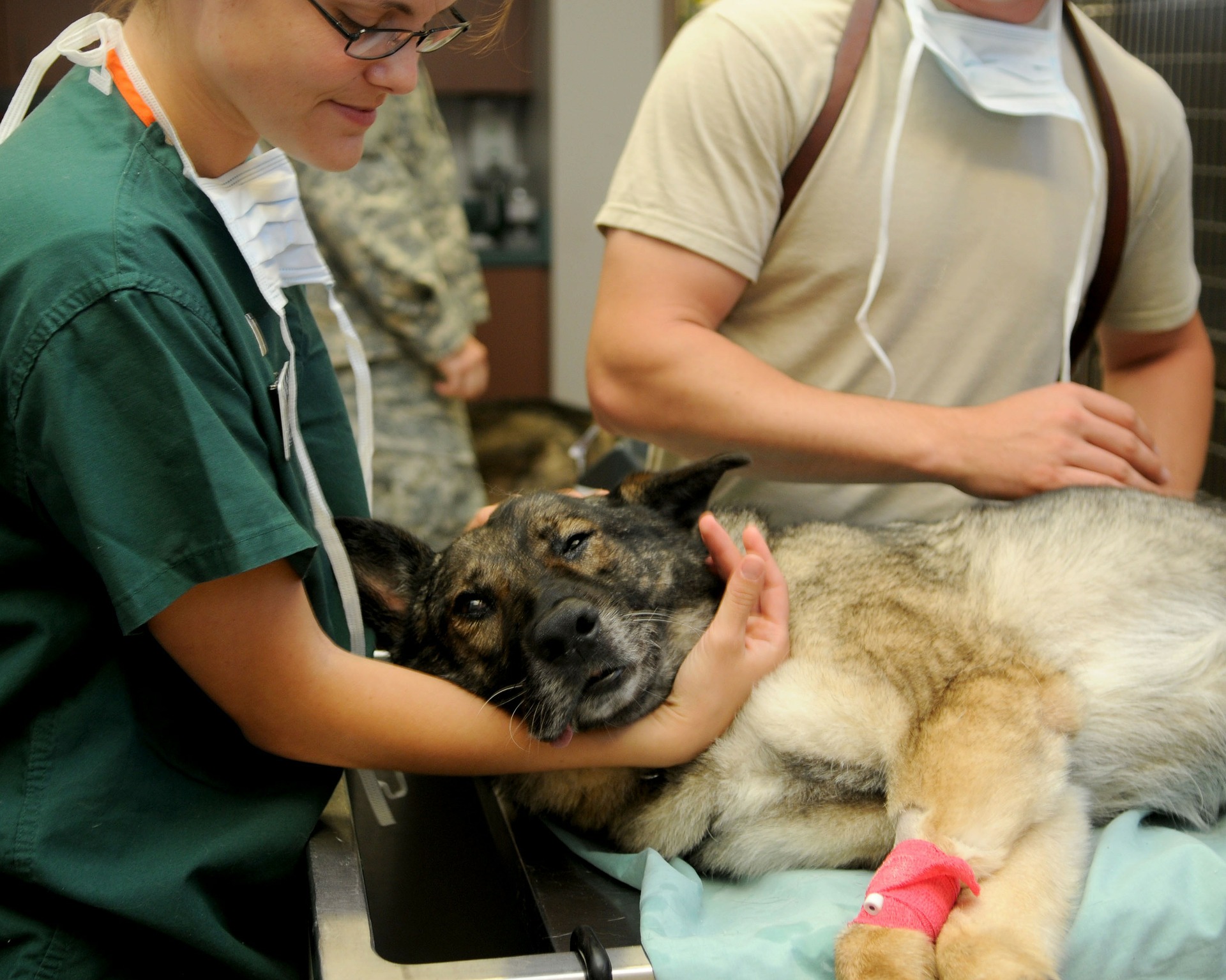April is National Pet First Aid Awareness Month.
Many of us have a general idea of how to react when minor medical emergencies occur among our human friends. However, very few people have considered what they would do if their beloved dog were to suffer an injury. Understanding a few basic procedures may help to sustain your pet while you are transporting him to the vet.
The Basics of Pet First Aid
- Breathing Emergencies: Just like human first aid, pet first aid starts with making sure they are breathing, and that their airway is clear. If your dog’s airway is clogged, you may be able to sweep his mouth and throat with your fingers. However, if this does not work, you may need to perform CPR. The best way to learn CPR for your dog is to take a local class and practice in a non-emergency situation. If you would like to learn the fundamentals from the comfort of your own home, look up informational videos online. The American Red Cross also has an app you can download for pet emergency advice.
- Pet First Aid Kit: You can easily put together a first aid kit for your dog. While speaking to a veterinary professional is best, having the supplies you need on hand will help you to carry out their instructions. You will want to have non-stick bandages, self-cling gauze, and paper tape in order to deal with open wounds; as well as a thermometer. The vet may ask or your dog’s temperature in order to determine if he is too hot or too cold. Here’s a Hint: You should have a muzzle in hand for your dog. Although your pet would normally never bite, if he is scared or in pain, he may. Being able to muzzle him while working on a wound may help to calm him. Other useful items for your pet first aid kit? Gloves, eyedroppers, tweezers, hot and cold compresses, antiseptic spray or wipes, plastic syringes, and clean towels or blankets.
- Poison Control: If your dog swallows a poisonous substance, you should call poison control immediately. Activated charcoal, hydrogen peroxide, milk of magnesia, and syrup of ipecac may all be useful in this emergency. The ASPCA has also developed a poison control app you can pull up on your phone for emergency advice.
Signs Your Dog is Experiencing a Health Emergency
- Dehydration: Skin between the shoulder blades does not return into place when pulled up.
- Heat Stroke: Collapsing or unsteady walking, difficulty breathing, excessive drool/saliva, vomiting, body temperature higher than 104 degrees, bright red mucous membranes.
- Poisoning: Dilated pupils, foaming at the mouth, excessive drool, seizures or bleeding.
- Intestinal Obstruction: Constipation, vomiting or diarrhea, reluctance to eat, stomach pain.The best way to determine if your dog is in any kind of medical distress is to be familiar with his normal behavior. Because a dog cannot tell you that he is in pain or feels ill, you will need to rely on non-verbal clues that something is wrong.
National Pet First Aid Month is a great time to take stock of your readiness for a pet emergency. Program emergency phone numbers into your phone, brush up on dog CPR, pack a first aid kit, and educate yourself on basic safety procedures – and you will be prepared to keep your dog safe if the unexpected occurs.
Gulf Coast K9 Dog Training offers Sarasota and Bradenton dog owners the tools, resources, and skills they need to have a happy and fulfilling relationship with their pet. From puppy training to obedience classes, we will work with you to reach your dog training goals.





